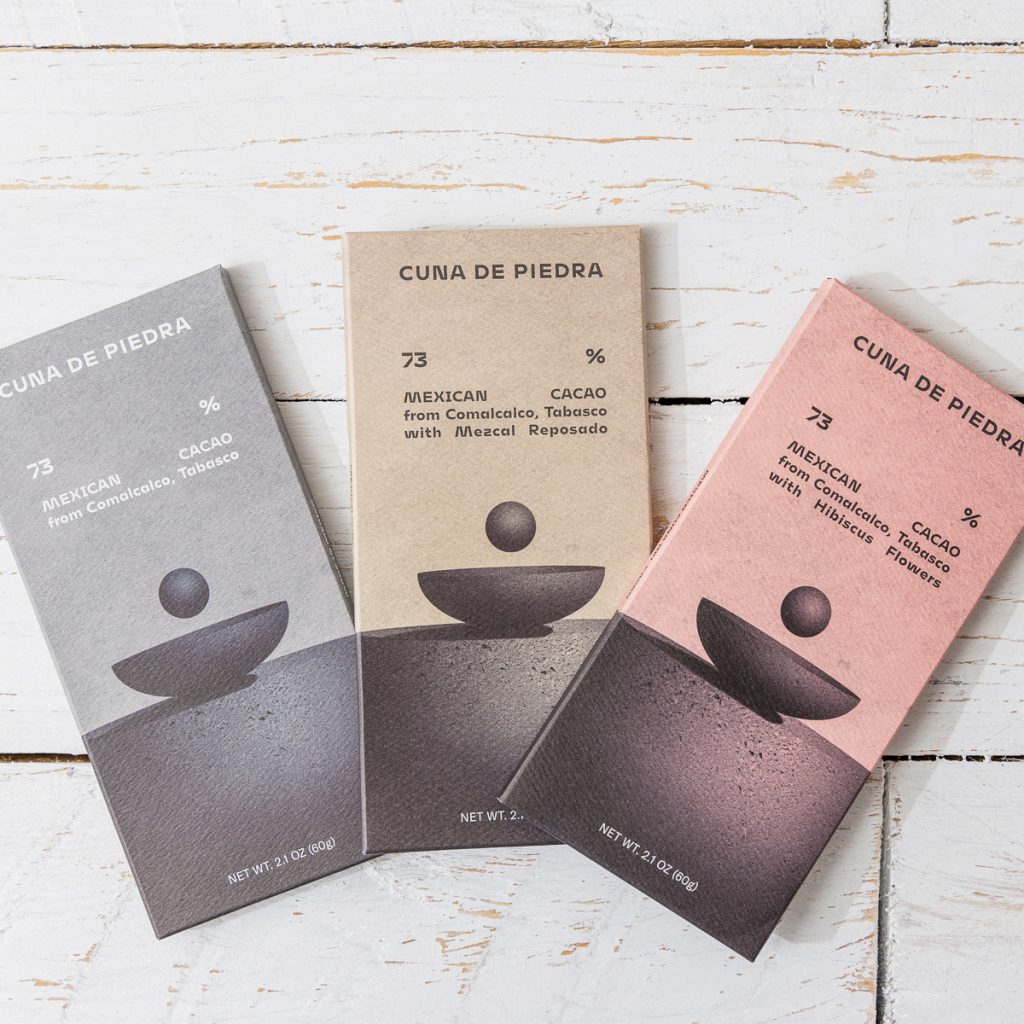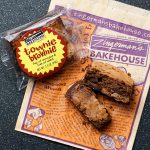Excerpt from Ari’s Top 5 enews
Amazing artisan chocolate bars by Cuna de Piedra arrive in Ann Arbor
 The story of cacao cultivation starts something like 1500 years ago, a long way to the south of here, most certainly in Central America by Mayan farmers, maybe even in southern Mexico. This story, for me though, starts in San Francisco, on a trip I’ll always remember. It was the first weekend of March 2020, and Tammie and I flew out there for the weekend. She got to visit her family while I did a book event about visioning with our friends at Heath Ceramics. While we were there, I attended an artisan chocolate show as well. Everything went well, but as most of you will remember, there was existential anxiety and enormous uncertainty in the air.
The story of cacao cultivation starts something like 1500 years ago, a long way to the south of here, most certainly in Central America by Mayan farmers, maybe even in southern Mexico. This story, for me though, starts in San Francisco, on a trip I’ll always remember. It was the first weekend of March 2020, and Tammie and I flew out there for the weekend. She got to visit her family while I did a book event about visioning with our friends at Heath Ceramics. While we were there, I attended an artisan chocolate show as well. Everything went well, but as most of you will remember, there was existential anxiety and enormous uncertainty in the air.
What follows here is about a small snippet of history, the sort that will never show up in the news, but the sort of positive-even-in-painful-times event that actually impacts our lives in barely visible, but ultimately, meaningful ways. It’s the story of a wonderful collection of artisan, bean-to-bar, chocolates from Mexico and the passionate caring artisans who craft them.
I met the crew from Cuna de Piedra at that chocolate show. Their chocolate is really good—the sort of balanced, complex flavors and long fine finishes that I’m drawn to. The package design is lovely. And they are also using distinctively Mexican inclusions like Mezcal, heirloom smoked chiles, and hibiscus. When we connected in San Francisco, the folks from Cuna de Piedra were just then approaching their first anniversary in business! The company was founded, formally, on March 14, 2019 (a day before we celebrated our 38th anniversary at Zingerman’s), near Monterey in northeastern Mexico, roughly halfway by highway from Mexico City to San Antonio. Their vision and their values—which manifest in the chocolate—are very aligned with ours:
Our mission is to raise the quality of life of everyone involved in the process of our chocolates, from those who grow and harvest the land, to those who consume our bars. We want to reshape the perception about Mexican products, inside and outside Mexico, and to share the beauty of our traditions to all the corners of Mexico and to the rest of the world. We make 100% Mexican products, with Mexican ingredients, by Mexican hands, in a country with the longest unbroken history of cacao domestication, growth and consumption. For us cacao is more than a crop; it is deeply rooted in our culture and always associated with community and sharing.
In the spirit of Emma Goldman’s—and my—belief that the means we use must be congruent with the ends we want to achieve, the packaging is well-aligned with their worldview:
What we are most proud of is that our packaging represents exactly the Mexico we want to show, the Mexico that makes us proud, not the one that exists in the imagination of foreigners or in the movies. Art is especially important to us. Everything is designed to communicate our respect for Mexico, for the pre-Hispanic era, for art, and above all to maintain this direct communication with the consumer until the end.
We have 4 bars on hand right now—some at the Deli, some at the Candy Store (inside the Coffee Company out on Plaza Drive).
73% cacao from Soconusco, Chiapas with Mezcal Joven
Young Mezcal, made from Maguey Espadín that comes from the small town of Santiago Matatlán, near Oaxaca, considered by many to be the “world capital of mezcal.” The agaves are crushed with an Egyptian stone mill, fermented in oak barrels, and then double-distilled in clay pot stills. The cacao comes from the region of Soconusco from a co-op of 28 farmers who clearly do a terrific job with growing, hand-harvesting, and fermenting. The flavor is fantastic. Citrus, subtle notes of herb, the Mezcal is gentle but still prominently present in the flavor; and the bar has a wonderfully fresh, buttery texture on the tongue.
73% cacao from Tabasco with Hibiscus Flowers
Hibiscus flower (in Spanish, Jamaica)—is used regularly in Mexico, most commonly to make agua fresca to drink. Here it’s an elegant, gently bittersweet, aromatic addition to heirloom cacao from the Tabasco region. The Hibiscus flowers are hand harvested by the indigenous community. This particular variety is the one that was first brought to Mexico by the Spanish on the Pacific route from Manila to Acapulco. The dark chocolate is beautifully accented by the bright tartness of the hibiscus.
73% Tabasco Cacao with Smoked Heirloom Chile
Terrifically tasty. The flavor of the chiles is, appropriately, an accent, not a dominant force. They use the heirloom Chile Nativo Tres Lomos, which are seeded by hand, then smoked on the ground for three days over smoldering fruit tree branches from guava, wild berries, etc.
60% Chocolate de Mesa Chinantla, Oaxaca with Mexican Cinnamon
These dark chocolate discs, scented with the Ceylon Cinnamon that’s long been favored in Mexico, are technically designed to make drinking chocolate, but I just eat them out of hand. The cacao comes from the permaculture farm of Doña Dionisia García northeast of Oaxaca. A bit more coarsely ground, delicate, nutty, and delicious.
The more I eat them, the more I like these special chocolate bars. And the more I learn about the history behind them, the more hopeful I find myself about the future. While the news about Mexico is dominated by stories of violence and illegal immigrants, the work of Cuna de Piedra is about what I believe is a more meaningful, and very real, part of Mexico, past, present, and future. As they say:
Cuna de Piedra was born from the desire to make a difference in the world, even if it was on a small scale. On this occasion, the challenge was much deeper than just creating a new brand … Concerned about the injustices that exist in the chocolate industry, we decided to join forces with friends to create a product from scratch, that in addition to ensuring a fair deal for the farmers, will also show a face of Mexico that will fill us with pride.
Learn more about all our amazing chocolate at Zingerman’s here!




